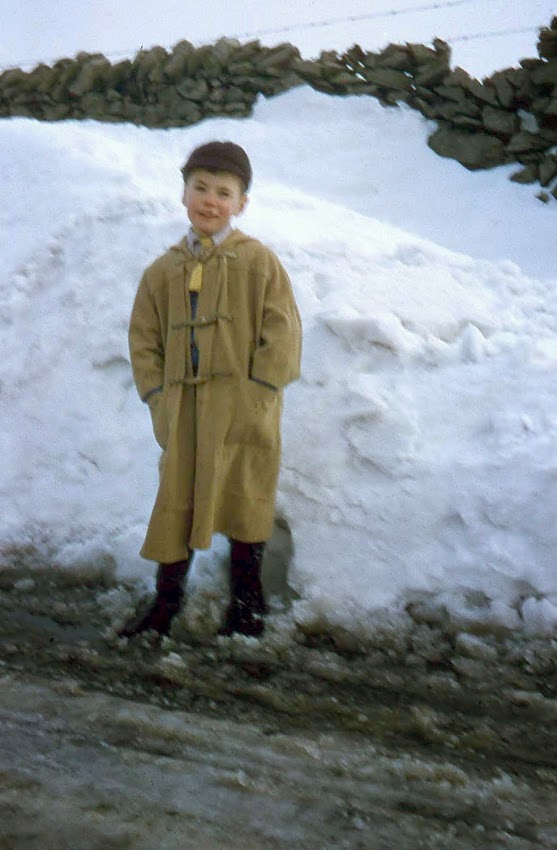Sat. 25 August: Pocaterra Ridge
Early-start
mountain! It seemed that, despite being
on the trail before 7.45 a.m., we were almost the last people on Pocaterra
Ridge today.
Setting
off from the Highwood Pass parking lot, J, R and I were just ahead of two hikers
who were on their way up Grizzly
Col. Canada , and so the chilly temperatures and the
snow were not surprising, especially after the heavy rains in Calgary
At
the trailhead, a notice asked hikers to keep an eye out for a missing hiker,
who had gone missing on this trail a year ago.
Nobody knows what happened to the 59 year-old Aussie. The first section of trail dives into the
forests, and perhaps he immediately went astray. There are several trails wandering through
the trees, some a bit vague. We picked
one of the lesser used options. Coming
out of the trees, we contoured around Pocaterra Cirque, below the steep sides
of Grizzly Peak
and Tyrwhitt Mountain
Our
trail was heading towards the mountain wall ahead of us, through some of the prettiest
alpine meadows you could imagine. The
bright green grass was covered by a light snowfall, and frozen wildflowers had not
yet given up the fight for survival. We passed
beside a small lake, with perfect reflections of the mountain wall. Coming out into the sunshine, we reached the foot
of the Pocaterra Ridge, separated from our trail by a curving frozen river of snow,
sweeping around the corner from the hidden heights of Little Highwood Pass.
Once
on the ridge, the going was straightforward, if steep, all the way to the
summit. Open slopes gave increasingly
superb views of the stunning scenery around the Highwood Pass. Elk Range Grizzly Col
We
stopped to admire an eagle soaring effortlessly up the mountainsides on invisible
currents of air, with perhaps just an occasional lazy flap of its wings. To our surprise we saw two groups of hikers
far ahead of us up the slopes. Being an
early starter, I rarely find anyone ahead of me. These people were REALLY early starters! We never did catch up with them.
The
summit of Pocaterra Ridge presented a suddenly breathtaking view northwards of mountain
scenery of the highest order. This narrow snow-brushed mountain top is, at
8,750 feet, the highest point on Pocaterra Ridge. The guidebook gives it the unromantic name of
“Peak 4”, since for hikers starting at the other end, it is the fourth of a
series of independent peaks along this rugged ridgeline. Our route today took us in a northerly
direction up and down this switchback, paralleling the Highwood Pass Rockfall
Valley
As
we walked along the summit ridge, we were even more surprised to meet three
guys who had already traversed the whole ridge from the north side. They must
have started way before dawn. What was
it about this ridge that drew such early birds?
The
next four hours were a delight, and occasionally a minor challenge. We steadily made our way up and down the
ridge, making sure not to miss each summit along the way. The finest views were perhaps eastwards to
the Elbow Valley
and the blue waters of Elbow
Lake
By
now it had warmed up a little. Earlier,
the occasional sharp wind had us scurrying to put our jackets on. Peak 1 (our final peak) was an attractive rounded
grassy summit, with fabulous views of the mountains immediately to the north,
and west to the Spray
Valley
Dropping
steeply down off the open ridge, we entered the forest and followed the narrow
trail as it plunged down and down to the valley floor far below. For some reason, the guide book describes
this route in the reverse direction from ours, which adds at least 1,000 feet
to an already strenuous outing. This
long steep ridge would not be a good start to a day. Apparently, not many years ago, hikers used
to have to bushwhack up here, which defies the imagination.
At
last we came out onto the forested valley floor, found a handy log spanning the
creek, and were soon back out onto the highway, just a few metres from the
Valleyview parking area. Here, at the
start of the day, we had left one car, before driving in the other vehicle up
to the Highwood summit where our hike had started. It was a simple drive the eight or so kilometres
back up the Pass. Near the top, a large
herd of bighorn sheep was standing in the middle of the road, not the least inclined
to heed passing vehicles – and of course this is exactly what the tourists have
come to see anyway. It was a busy scene
at the summit of the Pass.
We
completed our circuit by driving back to Calgary
down the Highwood
Valley Snow
Peak
Statistics
|
|
Pocaterra Ridge
|
|
Sat. 25 August
|
|
Total
Dist.
|
8.9
km (hike)
|
Height
Gain
|
2,100 ft.
|
Max.
Elev.
|
8,750 ft.
|
Time
|
7
hrs. 20 mins.
|
Other Stats.
|
|
Start: 7.44 am
Peak
4: 10.24 am
Peak
3: 11.30 am
Peak
2: 12.40 pm
Peak
1: 1.55 pm
Car: 3.04 pm
|
Temp: 0 to +17 C
Cloudless,
cool wind at times
Car locations: Start (Highwood Pass: 7,230 ft.) is 1000 ft. higher than end (Valleyview) |





















